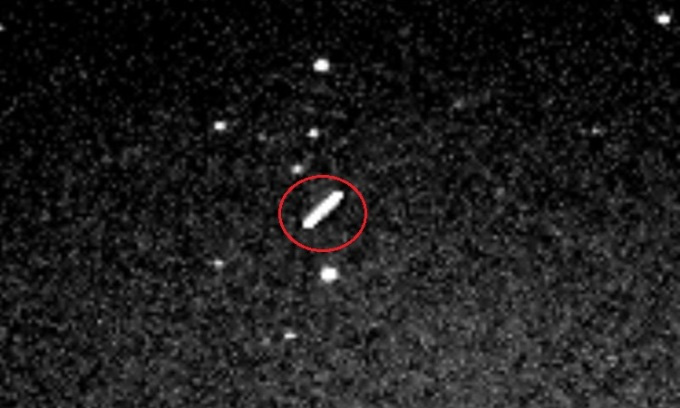A Giant Asteroid Will Pass by Earth at a Speed of Approximately 70,400 km/h on January 19

Image of asteroid (7482) 1994 PC1 taken in 1997, appearing as a long streak due to its high speed. (Photo: Sormano Astronomical Observatory)
The asteroid (7482) 1994 PC1 is set to fly by Earth at a distance of 1.93 million km, more than five times the distance between Earth and the Moon. The asteroid will be closest to Earth at 4:51 AM on January 19 (Hanoi time). Calculations of its trajectory have an error margin of only 133 km, meaning a collision is not expected during this approach.
Astronomer Robert McNaught at the Siding Spring Observatory in Australia first discovered (7482) 1994 PC1 in 1994. Scientists later identified this asteroid in photographs taken as far back as September 1974.
(7482) 1994 PC1 completes one orbit around the Sun in approximately 1 year and 7 months. The distance of this asteroid from the Sun ranges from 0.9 to 1.8 times the distance between the Sun and Earth.
With a diameter of about 1,000 meters, which is 2.5 times the height of the Empire State Building in the United States, (7482) 1994 PC1 is classified as “potentially hazardous” due to its large size and past close approaches to Earth. It is estimated that asteroids of this size strike Earth approximately every 600,000 years.
The most recent close approach of (7482) 1994 PC1 was on January 17, 1933, at a distance of 1.1 million km. The next approach is expected to occur on January 18, 2105.
(7482) 1994 PC1 will zoom past Earth at a speed of approximately 70,400 km/h on January 19. This event will provide astronomers with an opportunity to learn more about this asteroid. It belongs to the Apollo group, the most well-known group of asteroids recognized by scientists.
This asteroid is too faint to be observed with the naked eye or binoculars. However, astronomy enthusiasts can see it passing through the sky with a suitable telescope.


















































